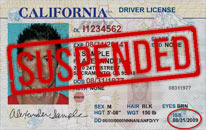California Vehicle Code section 21650 states the fundamental rule: “Upon all highways, a vehicle shall be driven upon the right half of the roadway.” This means that under normal circumstances, you should always drive on the right side of the road.
An officer might believe you were driving under the influence if you break this law, but there are times when it is legal to drive on the left side of the road. Understanding these laws can help you avoid traffic violations and potential accidents.
Let’s break down this California vehicle code and explain what right-hand lane violations are, along with the exceptions for driving on the left and the shoulder. If you’ve been charged with a DUI because an officer accused you of breaking this law, contact our Los Angeles DUI lawyers.
When Can You Legally Drive on the Left?
Vehicle Code 21650 outlines several situations where you’re allowed to drive on the left side of the road. Understanding these exceptions can help you drive safely and legally.
Overtaking and Passing
You can move to the left side of the road when you’re passing another vehicle going in the same direction. However, you must follow the rules governing this movement, which typically include:
- Ensuring there’s no oncoming traffic
- Signaling your intention to pass
- Returning to the right lane as soon as it’s safe to do so
Making a Left Turn
When you’re preparing to make a left turn, you’re allowed to move into a lawful position on the left side of the road. This includes:
- Moving into a designated left-turn lane
- Positioning your vehicle to the far left of your lane when there’s no turn lane
Road Construction or Repair
If the right side of the road is closed due to construction or repair, you can drive on the left. Always follow posted signs and instructions from construction workers in these situations.
One-Way Streets
On roads restricted to one-way traffic, the requirement to stay on the right doesn’t apply. You can use any lane that’s moving in the correct direction.
Narrow Roads
When the roadway isn’t wide enough for two vehicles to pass safely, you may need to use the left side. This often applies on narrow mountain roads or in residential areas with parked cars.
Can You Drive on the Shoulder?
The law recognizes that some vehicles might need to travel more slowly than the flow of traffic. If you’re driving a slow-moving vehicle, you have a special allowance to drive on the shoulder:
- You may use the portion of the highway adjacent to the right edge of the roadway
- This is only allowed temporarily and when it’s safe to do so
- This rule helps prevent slow vehicles from impeding normal traffic flow
In specific areas, transit buses are allowed to operate on the shoulder of state highways. This applies to:
- The Monterey-Salinas Transit District
- The Santa Cruz Metropolitan Transit District
This exception is part of a program to improve transit efficiency in these areas.
Lane Rules for Bicycles
Bicycles are allowed to operate on:
- Any shoulder of a highway
- Any sidewalk
- Any bicycle path within a highway
- Along any crosswalk or bicycle path crossing
However, cyclists must still follow all applicable traffic laws and any local ordinances that may restrict bicycle use in certain areas.
Why Understanding These Laws Matters
Knowing when you can and can’t drive on the left side of the road is crucial for several reasons:
- Safety: Following these rules helps prevent head-on collisions and other accidents
- Avoiding Traffic Violations: Improper lane use can result in tickets and fines
- Smoothing Traffic Flow: Proper use of lanes helps traffic move more efficiently
If you’re charged with a violation related to improper lane use, it could impact your driving record and potentially lead to increased insurance rates. Additionally, you may be charged with other crimes like DUI if an officer believes your driving pattern matches signs of intoxication.
How a Los Angeles DUI Lawyer Can Help
If you’ve been cited for a violation of Vehicle Code section 21650 or any other traffic law, we’re here to help. Attorney Michael Simmrin has extensive experience dealing with traffic violations and can provide the robust defense you need.
We can assist you by:
- Analyzing the specific circumstances of your case
- Identifying any potential errors in the officer’s assessment of the situation
- Developing a strong defense strategy
- Negotiating with prosecutors to reduce or dismiss charges when possible
- Representing you in traffic court if necessary
Don’t Let a Traffic Violation Impact Your Record – Contact Us Today
While driving on the right side of the road might seem straightforward, the exceptions and special cases outlined in Vehicle Code section 21650 can complicate matters. If you’ve been cited for improper lane use or any other traffic violation, don’t assume you have to accept the ticket and its consequences.
At Los Angeles DUI Lawyer, we’re committed to protecting your rights and your driving record. Contact us today to schedule a consultation. Let us put our years of experience to work for you.







